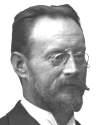
On 1 Sep 1858, Carl Auer was born, who was later created Freiherr (baron) von Welsbach. His invention of the incandescent gas mantle greatly improved the brightness of light that could be obtained from gas lamps. This was an important advance in a time before electric light dawned.
In this article from Illuminating Engineering, on The Work of Dr. Carl Auer von Welsbach in the Field of Artificial Illuminants, you'll find the story of an Austrian chemist who was working at his lab bench one day, researching spectra, when he found small beads of certain rare earths heated in a flame became white hot and incandescent. In a leap of intuition, he realized the potential for illumination. He experimented with soaking webbing with a mixture of suitable rare earth compounds, burning away the cotton framework, to create a mantle that became incandescent in a gas flame. He was eventually a manufacturer, distributing the mantles, or the fluids to make them, around the world.
For an interesting side-light in the story (pun!) you'll find mention of a variety of elements that you haven't seen discussed very often: lanthanum, zirconium, thorium and others. Worth a look to see how these rare earths had value in the nineteenth century in a commercial product.

On 1 Sep 1826, Alfred Ely Beach was born, who was an American inventor and publisher of Scientific American magazine which reported on technology developments and patents in the 19th-century.
Beach himself invented a tunneling shield, financed and secretly built an experimental subway which propelled a carriage by novel means. The tunnel was short, just one block, and operated as a demonstration (1870-73), with one station and train car. Even so, it was New York City's first subway when it was opened to the public. Today's book pick is: Secret Subway: The Fascinating Tale of an Amazing Feat of Engineering, by Martin W. Sandler who tells how the dream of this visionary engineer was crushed by the greed and political jockeying for power that characterized the city in the days of Boss Tweed and Tammany Hall. In the late 1860s New York was congested, a “bedlam on wheels,” yet Boss Tweed saw a threat to his power if the subway idea was extended.
This is a National Geographic Children's book for age 10 and up.
It is available from Amazon, typically about New from $13.34. Used from $1.89. (As of earlier time of writing - subject to change.)
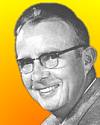 | There is no democracy in physics. We can’t say that some second-rate guy has as much right to opinion as Fermi. |
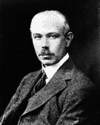 | Should the research worker of the future discover some means of releasing this [atomic] energy in a form which could be employed, the human race will have at its command powers beyond the dream of scientific fiction, but the remotest possibility must always be considered that the energy once liberated will be completely uncontrollable and by its intense violence detonate all neighbouring substances. In this event, the whole of the hydrogen on earth might be transformed at once and the success of the experiment published at large to the universe as a new star. |
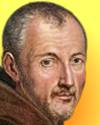 | The sciences have sworn among themselves an inviolable partnership; it is almost impossible to separate them, for they would rather suffer than be torn apart; and if anyone persists in doing so, he gets for his trouble only imperfect and confused fragments. Yet they do not arrive all together, but they hold each other by the hand so that they follow one another in a natural order which it is dangerous to change, because they refuse to enter in any other way where they are called. ... |
| Before you look at today's web page, see if you can answer some of these questions about the events that happened on this day. Some of the names are very familiar. Others will likely stump you. Tickle your curiosity with these questions, then check your answers on today's web page. | |
| Births | |
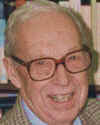 | Karl August Folkers, born 1 Sep 1906 was a U.S. chemist whose research on vitamins resulted in the isolation of vitamin B12, the only effective agent known in countering a certain medical problem. What is this medical problem? |
 | Francis William Aston, born 1 Sep 1877, was a British physicist who won the Nobel Prize for Chemistry in 1922 for his development of the mass spectrograph. What does the mass spectrograph do? |
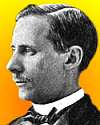 | Alfred Ely Beach, born 1 Sep 1826, was an American inventor and publisher, whose Scientific American helped stimulate 19th-century technological innovations and became one of the world's most prestigious science magazines. Beach himself invented a tunneling shield and built a subway (1870). What powered his subway carriages? |
| Deaths | |
 | Luis W. Alvarez (1911-1988) was an American experimental physicist who was awarded the Nobel Prize for Physics in 1968 for work that included the discovery of many resonance particles. What are resonance particles? |
| Events | |
 | On 1 Sep 1914, the Ectopistes migratorius became extinct as the last surviving bird of the native American species died at the Cincinnati Zoo. In the wild, it had been hunted to extinction; the fact that it traveled and nested in large flocks made it easy to slaughter. What is the common name of this often-quoted example of an extinct species? |
Fast answers for the previous newsletter for August 31: Jodrell Bank Experimental Station • law of the conservation of energy • inventions for the deaf • What was the industry he founded? • flight over water (Lake Erie) • cork.
 If you enjoy this newsletter, the website, or wish to offer encouragement or ideas, please send feedback by using your mail reader Reply button.
If you enjoy this newsletter, the website, or wish to offer encouragement or ideas, please send feedback by using your mail reader Reply button. Your click on a Facebook, StumbleUpon, or other social button on the site webpages is also a welcome sign of appreciation. Thank you for using them.
© This newsletter is copyright 2020 by todayinsci.com. Please respect the Webmaster's wishes and do not put copies online of the Newsletter — or any Today in Science History webpage. (If you already have done so, please remove them. Thank you.) Offline use in education is encouraged such as a printout on a bulletin board, or projected for classroom viewing. Online, descriptive links to our pages are welcomed, as these will provide a reader with the most recent revisions, additions and/or corrections of a webpage. For any other copyright questions, please contact the Webmaster by using your mail reader Reply button.
--
If you do not want to receive any more newsletters, Unsubscribe
To update your preferences and to unsubscribe visit this link
Executive Real Estate Business Class
-
"It was like a man with wings. It wasn't like anything you'd see on TV or in a monster movie." ...
About the publisher
Search This Blog
Blog Archive
-
▼
2020
(1542)
-
▼
September
(173)
- SCIENCE: Just how big is Everest?
- The Latest News from History News Network
- On This Day for September 30 - Munich Agreement si...
- We are called to return to our foundational values...
- Newsletter for Wednesday 30 September.
- They Killed His Wife And Left Him For Dead – Then ...
- TRAVEL: Telling new truths about America’s histori...
- Make learning fun with Nat Geo Kids magazine! Subs...
- On This Day for September 29 - British mandate in ...
- Newsletter for Tuesday 29 September.
- Special Edition: Dinosaurs come to life like never...
- September 29: On This Day in History
- HISTORY: America's most endangered historic sites
- New This Week on History News Network
- On This Day for September 28 - California “discove...
- Newsletter for Monday 28 September.
- September 28: On This Day in History
- FAMILY: What do I tell my kids about wildfires and...
- On This Day for September 27 - Norman Conquest beg...
- Newsletter for Sunday 27 September.
- September 27: The Rosetta Stone, E=mc² and Fear as...
- The Compass: Indonesia
- On This Day for September 26 - First televised U.S...
- Newsletter for Saturday 26 September.
- September 26: Frances Drake's Circumnavigation, th...
- CORONAVIRUS UPDATE: Is this the end of the office?
- PHOTOGRAPHY: They feed us. Now we see them.
- The assassination of Lord Mountbatten | Enola Holm...
- 39,500-Year-Old Cave Bear Discovered Perfectly Pre...
- On This Day for September 25 - Pacific Ocean sight...
- The Roundup Top Ten for September 25, 2020
- Newsletter for Friday 25 September.
- September 25: Battle of Stamford Bridge, Remote Co...
- ANIMALS: These mighty elephants find peace
- On This Day for September 24 - Federal troops sent...
- Newsletter for Thursday 24 September.
- Global cartels taking control of the world + HPA B...
- September 24: Decline of the Byzantine Empire, Ope...
- YOUR WEEKLY ESCAPE: America's oldest mystery
- SCIENCE: How to cope with a big death toll
- The Latest News from History News Network
- On This Day for September 23 - Neptune observed, J...
- Newsletter for Wednesday 23 September.
- September 23: Nintendo, the Start of Data Processi...
- TRAVEL: How will America’s state parks survive?
- Matching gift opportunity for Sumatran rhinos
- On This Day for September 22 - Solidarity formed, ...
- Newsletter for Tuesday 22 September.
- September 22: Salem Witch Trials, Iraq's Invasion ...
- HISTORY: Who can replace RBG?
- Feed their curiosity! Get Nat Geo Kids magazine fo...
- New This Week on History News Network
- On This Day for September 21 - Joseph Smith's visi...
- Newsletter for Monday 21 September.
- September 21: France, China and a Sheep Shearing R...
- FAMILY: Don’t tell your kids outdated stuff about ...
- On This Day for September 20 - Rome incorporated i...
- Pro-life is not Politics + Vickie Travis's message...
- Newsletter for Sunday 20 September.
- September 20: Attila the Hun, Magellan's Circumnav...
- The Compass: Chile
- Matching gift opportunity for Sumatran rhinos
- On This Day for September 19 - George Washington's...
- Newsletter for Saturday 19 September.
- CORONAVIRUS UPDATE: Young people are spreading the...
- September 19: 1st Country to Grant Women the Right...
- PHOTOGRAPHY: How to make dinos look new (CORRECTED)
- Quick Note: How to Save Videos by Downloading
- PHOTOGRAPHY: How to make dinos look new
- The Mayflower | Medieval spiders | Ancient Egypt f...
- When She Found Out Her Boyfriend Was A Serial Kill...
- The Roundup Top Ten from History News Network
- On This Day for September 18 - Mukden seized by Ja...
- Newsletter for Friday 18 September.
- "Truth Crushes Evil" + We're Winding down + What ...
- YOUR WEEKLY ESCAPE: The country that doesn't exist
- September 18: Great Fire of Moscow, the CIA and El...
- ANIMALS: How U.S. officials stopped the flying squ...
- Two New Podcasts From HISTORY
- Don't miss out: back to school savings for learner...
- On This Day for September 17 - Camp David Accords ...
- Newsletter for Thursday 17 September.
- September 17: Bloodiest Day in the American Civil ...
- SCIENCE: He found part of a one-of-a-kind dinosaur
- SPECIAL REPORT: How the West is primed to burn
- The Latest News from History News Network
- On This Day for September 16 - Mayflower's departu...
- Newsletter for Wednesday 16 September.
- September 16: French Abolish Slavery, Malaysia For...
- TRAVEL: Will slowing down help you get stronger?
- Special Report: How do we end this pandemic?
- On This Day for September 15 - Central Americans g...
- Newsletter for Tuesday 15 September.
- September 15: Darwin Reaches the Galapagos, Penici...
- HISTORY: How the U.S. battled catastrophic wildfir...
- BREAKING NEWS: Possible evidence of life found on ...
- Discover Remarkable Leaders With Nat Geo History M...
- On This Day for September 14 - Mexico City capture...
- New This Week on History News Network
- Newsletter for Monday 14 September.
-
▼
September
(173)
-
Blogroll
-
About
HistoryFact










0 comments:
Post a Comment